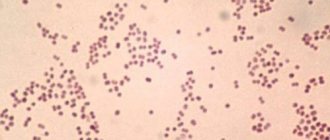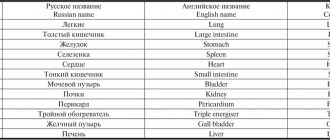Types of meningitis
It is generally accepted that the first symptoms of meningitis were described by Hippocrates, and then by medieval healers. So humanity has known about this disease for a very long time. But for many years, tuberculosis was mistakenly believed to be the cause of inflammation of the meninges, and before the discovery of antibiotics, 95 out of 100 patients died from meningitis. Nowadays, treating meningitis is also not easy, but thanks to modern knowledge, the survival rate is much higher than several centuries ago.
However, for effective therapy, it is necessary to initially determine what type of meningitis will have to be dealt with. And this disease is very “many-sided” in origin and nature, therefore, in the international classification of diseases (ICD 10), each type is assigned its own code and definition, and specialists use different methods to systematize the disease.
According to the nature of inflammation, meningitis is divided into:
- purulent;
- serous.
In the first case, the disease is caused by meningococcal bacteria, is very severe, and is caused by a primary septic process. The second type is of viral origin and is considered less dangerous compared to purulent bacterial meningitis and is less likely to cause complications.
By origin, meningitis is divided into:
- primary (independent disease);
- secondary (appears as a complication of sinusitis, otitis, respiratory infections, osteomyelitis of the skull bones, caries, boils on the face or neck, tonsillitis, and sometimes occurs against the background of diseases such as tuberculosis, measles, mumps, syphilis).
Classification by pathogen:
- bacterial;
- fungal;
- viral;
- protozoan;
- mixed.
According to the nature of the flow:
- lightning (fulminant);
- spicy;
- subacute;
- chronic;
- recurrent.
By localization of inflammation:
- total;
- basal (affects the deep parts of the brain);
- spinal (affects the spinal cord);
- convexital (affects the superficial part of the brain).
According to severity:
- mild;
- medium heavy;
- heavy.
In addition, there is also non-infectious meningitis. This is a type of aseptic meningitis, that is, a disease caused by any other non-bacterial agents - non-infectious diseases, drugs or vaccines. Overall, these causes of meningitis are rare. Most often, doctors diagnose cases of viral, bacterial, secondary purulent and fungal meningitis. Moreover, the bacterial (meningococcal) variety of the disease is more common among children under 5 years of age, and the fungal type is more common among pregnant women, patients after chemotherapy, as well as patients with acquired immunodeficiency. Bacterial, also purulent, meningitis can affect even babies under one year old, and viral (serous) meningitis in children, as a rule, develops after mumps or Coxsackie viruses, ECHO. The viral form is not as dangerous for children as the purulent form, since it is easier to treat and less likely to cause complications.
Causes of infection
In many clinical cases, meningitis manifests itself as a seasonal disease. But contrary to popular belief, hypothermia cannot be considered its main cause. Statistics indicate that more cases of infection occur in the warm season, as well as in countries with temperate climates. However, experts also record surges in the spread of the disease in the off-season. This is facilitated by several factors: increased humidity and decreased air temperature outside, seasonal hypovitaminosis, as well as longer stays in poorly ventilated areas. Not long ago, scientists noticed another cyclical pattern: every 10-15 years, an epidemic of meningitis is registered in the world. For example, in 2021, an epidemic of serous meningitis caused by the enterovirus ECHO30 from China was recorded in Russia.
Viral meningitis can be caused by enteroviruses, measles, rubella, chickenpox, herpes or mumps viruses. The bacterial variety of the disease is caused by staphylococci, meningococci, streptococci, salmonella, klebsiella, tuberculosis, pseudomonas or hemophilus influenzae. The causative agents of the disease are fungal etiology, Candida and Cryptococcus. The cause of protozoal meningitis can be protozoan microorganisms (intracellular parasites), and a mixed type of disease occurs due to the complex influence of several factors at once. The carriers of any meningitis are infected people.
People with weakened immune systems and children under 5 years of age are most susceptible to the disease (their immune system is still developing, and the blood-brain barrier is characterized by increased permeability). If we analyze the prevalence of the disease between the sexes, then more cases of inflammation in the brain are diagnosed among men (usually at the age of 20-30 years). Also at risk are pregnant women, people with diabetes, gastrointestinal ulcers, AIDS, those suffering from chronic fatigue, or people suffering from malnutrition. In the so-called “Third World” countries, the prevalence of meningitis is almost 40 times higher than the European average. It is also interesting that in Europe and Russia, diseases of bacterial etiology are approximately 3 times less common than viral ones. Doctors say the main reason for this is vaccination, which can help prevent the bacterial form of the disease. After vaccination, the body produces antibodies against specific strains and serological types of the pathogen.
To protect yourself, first of all, you need to understand that meningitis is a contagious disease. Depending on the species, it can be transmitted in different ways:
- airborne (through saliva particles during coughing and sneezing);
- fecal-oral (through unwashed hands, fruits and vegetables, contaminated water);
- hemocontact (through blood);
- lymphogenous (through lymphatic fluid);
- placental (from pregnant women to the fetus);
- water (when swimming in open reservoirs or pools);
- contact and household (through household items, dishes, toys);
- through insect bites (mainly in African countries).
In children under 1 year of age, meningitis can be caused by the same reasons as in adults or have other causes. For example, be a consequence of birth trauma, prematurity, damage to the brain or spinal cord, sepsis, disease of the middle ear or nasopharynx. If a woman has meningitis during pregnancy, the risk of transmitting the infection to the fetus is very high, and this can lead to developmental disorders of the child. In most cases, meningitis during pregnancy ends in spontaneous abortion or intrauterine fetal death. But even if the fetus survives, doctors usually advise women to terminate their current pregnancy.
What is meningitis
The pathology is an inflammation of the lining of the brain or spinal cord and can be caused by a variety of pathogens, including bacteria, other pathogenic microorganisms and even parasites. The inflammatory process in the arachnoid mater of the spinal cord or brain is an extremely dangerous disease that varies in etiology, symptoms, routes of transmission, and degree of contagiousness.
The answer to this question depends on the type of disease and the pathogen that caused its manifestation. Is primary type meningitis transmitted? Doctors note that this type of pathology is almost always contagious. For example, with purulent meningitis, which is stimulated by meningococcal infection, infection occurs through the air and droplets (through sneezing, kissing, coughing, etc.).
Is serous meningitis contagious? The cause of the disease is enterovirus infection. In addition to airborne transmission, the pathology is transmitted through the fecal-oral route (the source of infection is dirty hands) and through household contact: through objects used by the patient. This disease can also be transmitted by swimming in pools or ponds. The secondary disease is often not contagious: in this case, meningitis serves as a complication of other inflammatory processes.
- How to open a DMG file. Which program opens files with the DMG extension in Windows
- What does urticaria look like on the body and face with a photo. Symptoms and manifestations of types of urticaria in adults and children
- Pool cleaner to prevent water from blooming
Bacterial and primary viral meningitis are transmitted from a patient or a carrier of infection to a healthy person in different ways (secondary pathologies, as a rule, are not transmitted). The pathogen is transmitted:
- through water, dirty hands, contaminated objects;
- during sexual intercourse;
- to a child from a mother during childbirth;
- oral-fecal route;
- upon contact with the blood of an infected person or carrier of meningococcal infection;
- in most cases, meningitis is transmitted by airborne droplets;
- through the bite of encephalitis ticks.
Viral meningitis in a child is less dangerous than bacterial meningitis. However, the pathology belongs to the category of infectious and appears under the influence of provoked viruses resistant to the external environment - ECHO and Coxsackie, less often by the mumps virus or adenovirus. The disease is transmitted from a sick person or someone who has been in contact with him. Meningitis enters the body and subsequently develops:
- through dirty hands;
- due to insufficiently purified food products;
- through infected water;
- by airborne droplets in crowded places;
- while swimming in polluted waters.
The viral type of the disease is characterized by the fact that it most often affects children from 2 to 6 years old. Meningitis is rarely transmitted to babies under 6 months of age due to the strong immunity they receive from breastfeeding. As a rule, outbreaks of the serous type of disease are observed in the autumn and summer periods, and sporadic cases of winter viral meningitis are recorded extremely rarely.
Variants of the course of meningitis
Meningitis is most dangerous for children under 5 years of age. Sadly, every 20 baby diagnosed with inflammation of the meninges dies. The most dangerous form of meningitis in newborns is considered to be a disease caused by streptococcal infection. Infection occurs during the baby's passage through the mother's birth canal. In this case, the disease develops at lightning speed and the child either dies within the first month of life or suffers serious developmental disorders. A complicated form of meningitis is no less dangerous for children. And already at the age of 1 to 5 years, children more often suffer from viral meningitis, which usually goes away more easily than bacterial meningitis.
The course of the disease includes three periods: incubation, prodromal and the disease itself. The incubation period is the time from the moment the virus enters the body until the first symptoms of the disease appear. During this period, viruses or bacteria are present in the body in small quantities and therefore do not cause significant concern. Depending on the course of the disease, the incubation period can last from several minutes (rapid development) to several years (chronic inflammation). The duration of the incubation period also depends on the state of the patient’s immune system: the weaker it is, the faster the disease manifests itself. Most often, the incubation period lasts from 1 to 10 days. If the disease was diagnosed in the first two days after infection, then the chances of cure reach 95%.
The fulminant, or fulminant, form of meningitis is the most dangerous. With this form, all stages of the disease pass almost instantly, and death is possible within the first day. Acute meningitis also occurs according to an “accelerated” program: as a rule, 3 days are enough for the infection to reach its peak or even cause the death of the patient.
Purulent meningitis can enter the prodromal stage (the time when classic symptoms of the disease appear) within a few hours after bacteria enter the body. Acute bacterial inflammation progresses very quickly. If the disease was caused by Neisseria meningitidis, the patient may die within a few hours after infection. Against the background of this type of disease, bilateral hemorrhagic adrenal infarction (Waterhouse-Friderichsen syndrome) is possible. And the disease caused by the bacterium Haemophilus influenzae, or hemophilus influenzae meningitis, is more common in countries where vaccination against hemophilus influenzae is not carried out.
During the acute period of the disease, it develops from several days to several weeks, and chronic meningitis manifests itself no earlier than 4 weeks after infection. In addition, while most forms of inflammation in the brain occur rather quickly, chronic meningitis can drag on for even more than 25 years. In this case, the disease develops gradually, and it is almost impossible to determine when the infection entered the body.
Sometimes inflammation of the meninges returns even after successful treatment. Relapse can be caused by viruses, bacteria or non-infectious factors. The most common cause of recurrent disease is herpes simplex virus type 2 (Mollare meningitis). Bacterial meningitis can recur due to congenital or acquired defects of the base of the skull or spine.
Transfer options
Is it possible to become infected with meningitis without direct contact with a sick person? Viral and bacterial meningitis are transmitted in a variety of ways. The most common transmission options are contact with dirty hands, unprotected sexual intercourse, passage through the birth canal, encephalitis tick bites, and swimming in dirty water.
Infectious will be carriers of the infection whose immunity does not allow the disease to develop. Microbes can be transmitted to a healthy person from a sick person in various ways. The issue of transmitting the disease to a small child can be considered separately.
Child infection
For a child, the viral version of the disease occurs with less risk than the bacterial one. In addition to the ECHO and Coxsackie viruses, the disease is sometimes provoked by an adenovirus. Children who do not receive their mother's breast milk and those under six years old are at risk. Viral infectious meningitis is most often transmitted by them.
Infants up to six months are protected through natural breastfeeding. Milk contains all the necessary substances and antibodies that make the baby’s immunity resistant to diseases.
The children's age category becomes vulnerable in the summer and autumn, especially when it comes to serous meningitis. In winter, sporadic cases of infection are rarely observed.
Viral nature of inflammation
This type of disease is characterized by the widest distribution. It is caused by enteroviruses or measles or chickenpox, which appeared chronologically first. How can you get this type of meningitis? Sick people, as well as carriers of the virus without signs of illness, will be potentially dangerous. Animals are also considered carriers.
One of the methods of infection is airborne, when a person sneezing or coughing releases a huge amount of germs into the air. Kissing and unprotected sex can also spread the virus. The oral-fecal or nutritional route is another option for infection. If hygiene rules are not followed, hands are not washed after using the toilet, and infection opens a wide way for the transition to a healthy person.
The virus can be transmitted to a baby passing through the birth canal from the mother. The contact and household route of transmission makes itself felt when using the things of a sick person.
Bacterial nature of inflammation
It is worth emphasizing once again: meningitis is an infectious disease, and the main cause of infection lies in the carrier of the virus. The path of bacterial infection begins in the nasopharynx and continues through the bloodstream. Microbes can reach the brain, causing clinical symptoms of meningitis.
All patients with this form of the disease are considered infectious; they release germs into the air. People with normal immune systems have a low risk of infection. Pathogenic microbes are sometimes accidentally found in the nasopharynx of a healthy person without symptoms of disease.
Factors that increase the likelihood of infection are:
- age (adults are less susceptible to pathology compared to young children);
- weak immunity (against the background of other diseases);
- constant presence in crowded places;
- work in a pathogenic environment;
- travel to countries with open foci of infection.
Symptoms
The insidiousness of meningitis lies in its rapid development. Medicine knows of cases where death occurred just a few hours after the onset of the acute period of the disease. In the classic version, the incubation period of meningitis in most cases lasts from 4 days to a week. Timely diagnosis of the disease significantly increases the chances of successful treatment of the patient. However, in most cases, the symptoms accompanying the onset of meningitis are not perceived by the patient as an alarming signal; the disease manifests itself as general infectious symptoms: the patient experiences chills, fever, elevated body temperature, and in some cases, skin rashes may appear.
The main symptom of meningitis is headache, which becomes more intense as the disease progresses. The nature of the pain is bursting, the pain can be very intense. In this case, the pain can be localized to the forehead and back of the head, radiating to the neck and spine. Bursting pain is associated with increased intracranial pressure as a result of the action of pathogen toxins. The pain syndrome intensifies when moving the head, as well as due to loud sounds and bright lights. Another sign important for differentiating the nature of a headache is rigidity (strong tension) of the neck muscles. Patients with meningitis (adults and children) do not lie in the usual position on their back. To ease the pain, they turn on their side, tuck their knees to their stomach and instinctively throw their head back.
Inflammation of the membranes of the brain is in many cases accompanied by nausea and severe vomiting. Moreover, the gag reflex does not stop even with a complete refusal of food. In addition, the patient’s body temperature rises (intermittently or remains consistently high at 39-40 degrees) and is not controlled by traditional antipyretics, severe weakness and sweating appear. The patient complains of intolerance to bright light, which worsens the headache. The presence of meningitis can also be suspected in cases where a bursting headache is accompanied by a disturbance of consciousness (a person answers questions slowly and with difficulty or does not respond to requests at all). Mental disorders indicating inflammation of the membranes of the brain can manifest as hallucinations, apathy or aggression. The patient may experience leg and/or arm cramps, muscle pain, and squint (if the inflammation has spread to the optic nerves).
In addition to the classic ones, specific signs will help to recognize meningitis in young children: Kernig's sign and the upper Brudzinski's sign. In the first case, a child lying on his back with his legs raised will not be able to straighten them at the knee joints. The second symptom is also determined in the supine position. If a baby, raising his head, involuntarily bends his knees, this may also indicate inflammation in the meninges. To identify the disease in infants, the fontanel is examined: its swelling and tension are an alarming signal. Another sign of inflammation of the meninges in children is a rash, which is then replaced by specific bright burgundy spots that spread over the baby’s entire body.
MENINGITIS: AN INFECTION WITH MANY FACES
“I have seen cases where a person felt well at breakfast, and by lunchtime he was already dead!” — Clayton Golledge, an American microbiologist and infectious disease specialist, wrote about meningitis. Alas, despite all the achievements of modern medicine, this infection still remains one of the most dangerous and has a fairly high mortality rate.
We asked a pediatrician, deputy chief physician of Children's City Clinical Hospital No. 9 named after G.N. about how to recognize it and how to protect against it. Speransky on the infection of Alexander Tebenkov.
“Meningitis is called inflammation of the membranes of the soft meninges,” the expert explains. — The causes of this disease can be very different, sometimes it leads to fulminant sepsis and the most tragic outcome. This is why doctors are so insistent about the need for vaccination. Moreover, parents should understand that there is no single vaccination, because the causative agents of meningitis can include both viruses and bacteria.
Meningitis can be an independent disease or a manifestation of a generalized bacterial or viral infection. The most common bacterial pathogens are meningococcus, pneumococcus and hemophilus influenzae.
Meningitis usually occurs in winter and spring and coincides with an outbreak of respiratory infections. As experts say, meningitis comes on the “tail” of ARVI. And every 10-15 years there is a significant increase in the incidence of meningococcal meningitis. Now we stand just on the threshold of another rise.
In most cases, meningitis is transmitted by airborne droplets, that is, it is transmitted by coughing and sneezing, as well as by contact with an infected person.
The most contagious pathogen, which causes periodic outbreaks, is meningococcus. Once on the mucous membranes of the nasopharynx, it penetrates through the bloodstream through the blood-brain barrier, ends up in the soft meninges and causes inflammation in them. This microorganism has many serogroups. The most common are A, B, C, and in the last few years they have been joined by meningococcus W135. The latter often becomes the cause of very severe meningitis. Strains E29, Y, Z, K are found much less frequently. The list is far from exhaustive.
Meningococcal infection accounts for more than 50% of bacterial meningitis. Further, in the process of decreasing, its causative agents turn out to be Haemophilus influenzae and pneumococcus. According to statistics, those at risk for meningococcus are young children, especially boys in the first 5 years of life, and young people 18-24 years old. Haemophilus influenzae most often causes meningitis in children aged 6 months to 4 years, pneumococcus usually causes it in children under 2 and over 10 years.
Acute onset
Parents should immediately be alert to symptoms such as a sharp rise in temperature to 39-40 degrees, a significant deterioration in well-being and headaches accompanied by nausea and vomiting that are not associated with food intake. Another telltale symptom is photophobia.
It is important to call an ambulance as quickly as possible or take the child to the hospital yourself. Meningococcal meningitis can be accompanied by meningococcal sepsis and take fulminant forms. With Haemophilus influenzae infection, symptoms may develop within 1-3 days. It happens that a pink or red rash also appears (most often with meningococcal infection), which disappears with pressure. After a few hours, it turns into bruises with a dark center of varying sizes. This is a very dangerous symptom: necrosis of soft tissues caused by sepsis has begun. An ambulance must be called immediately and rush to the hospital. Delay is like death!
The rash may appear without clear symptoms of meningitis. But when combined with high temperature, this is a serious reason for alarm and calling an ambulance.
Any of the pathogens can bring a patient to intensive care within a matter of hours.
Diagnosis of meningitis
In addition to the symptoms that are immediately visible, in the hospital emergency room the doctor will also check the so-called meningeal symptoms to make a diagnosis.
This:
rigidity of the neck muscles: their increased tone makes it impossible to tilt the head forward, often because of this the child generally lies with his head thrown back;
Kernig's sign
: the leg of the patient lying on his back is bent at an angle of 90° at the knee and then an attempt is made to straighten it. With meningitis, this cannot be done due to a reflex increase in the tone of the leg flexor muscles;
Brudzinski's symptoms
: if you lay the patient on his back and tilt his head to his chest, the legs at the hip and knee joints will involuntarily bend. They will also involuntarily bend if you press on the area of the symphysis pubis;
Lesage's symptoms
: When the baby is held under the armpits, he throws his head back and pulls his legs towards his stomach.
In infants, the large fontanelle is checked
: It bulges, pulsates and is tense.
If meningitis is suspected, a mandatory examination of the cerebrospinal fluid helps to remove or confirm the diagnosis. To do this, a lumbar puncture is performed: a needle is inserted into the spine at the level of the lumbar region. The cerebrospinal fluid obtained with its help is examined for cytosis (content of cellular elements). Based on the results, one can judge the nature of the inflammation - whether it is viral or bacterial. In case of bacterial infection, the content of neutrophils and protein in the cerebrospinal fluid is increased. In parallel, in order to accurately determine the pathogen, a bacterial culture of the cerebrospinal fluid is performed.
In addition, to find out the area and volume of brain damage, as well as to predict the course of the disease, CT or MRI is performed.
The latex agglutination method helps to identify the pathogen literally within a few minutes, without waiting for the results of a bacterial test (its results take several days). The PCR method is also used for express analysis. This does not cancel bacteriological research. As a rule, it confirms the results of express methods.
Long treatment
If treatment is started literally in the first hours of the onset of the disease, the prognosis in most cases is favorable. Therefore, antibacterial therapy begins even before obtaining accurate results of bacteriological examination. The doctor relies on the results of express methods and his own intuition and experience.
“When prescribing antibiotics, their ability to penetrate the blood-brain barrier and act on the widest possible range of possible pathogens is taken into account,” says pediatrician Alexander Tebenkov
. — Currently, drugs such as third-generation cephalosporins and carbapenems are used.
Meningococcus is sensitive to penicillin antibiotics. But pneumococcus and Haemophilus influenzae can be resistant to antibiotics.
Be prepared for the fact that recovery from meningitis will be long. Recovery on the 13-15th day from the onset of the disease and, accordingly, discharge from the hospital are considered a good result. The child is discharged home under outpatient supervision of a neurologist. The first examination should take place a month after discharge, then 2 more examinations are carried out at an interval of 3 months. A specialist is then placed as needed. Outpatient observation, if everything goes according to plan, lasts up to 2 years.
Salvation lies in vaccination. Meningitis usually does not go away without consequences.
“According to statistics, residual neurological disorders in the psycho-emotional sphere are observed in 35-40% of cases,” says our expert. — In 5-12% of cases, meningitis causes sensorineural hearing loss, which is diagnosed after recovery. Motor and visual impairments are also noted. All this adversely affects the overall development of the child. After severe forms of meningitis and late treatment, there are cases of severe mental disorders.
If the disease is severe, there is also a possibility of hypertension syndrome, convulsive syndrome (epilepsy), paresis and even paralysis. In adults, such disorders lead to severe disability—up to 25% of all complications are ischemic stroke. Children have higher compensatory capabilities.
How to protect a child from this terrible disease with a large percentage of tragic outcomes?
Firstly, follow basic hygiene rules and teach your baby this, and secondly, get vaccinated. Vaccination may not provide 100% protection, but it will eliminate the threat of infection by the most common pathogens of this disease and prevent the development of generalized, severe forms of the disease. However, cross immunity cannot be ruled out. Vaccination with a combined vaccine, for example, against meningococcus, will significantly alleviate the course of the disease when infected with rare pathogens for which there is no vaccine.
“Now there are vaccines to prevent meningococcal, pneumococcal and hemophilic infections,” continues Alexander Tebenkov
. — We mean their generalized forms, which cause not only meningitis, but also other serious diseases. Vaccinations against pneumococcus Pneumo-23 and Prevenar-13 are included in the national vaccination calendar. Moscow has also included vaccination against pneumococcus in its regional calendar. For example, Menactra protects against 4 types of pneumococcus - A, C, W135 and E29.
On average, serious consequences after meningitis are observed in 10-30% of patients. Most of them are preschool children and people over 60 years old.
https://phmlife.ru/medkabinet/detskie-bolezni/123-mnogolikaya-infektsiya.html#expert
Diagnostics
An experienced doctor may suspect meningitis in a patient based on external clinical signs, but they are not enough to make an accurate diagnosis. It is important not only to confirm or deny the presence of the disease, but also to determine its type and stage of development. To do this, the patient undergoes a comprehensive examination, which includes a complete blood count (CBC), a general urinalysis and a smear from the pharynx mucosa. One of the main confirmatory tests is spinal cord puncture and laboratory diagnosis of cerebrospinal fluid (CSF). Since the brain and spinal cord are in constant contact, clouded cerebrospinal fluid is always considered as the main marker of meningitis.
If during a puncture there are signs of increased cerebrospinal fluid pressure (cerebrospinal fluid flows out in a trickle or in frequent drops), experts regard this as one of the laboratory signs of meningitis. In addition, the color of the cerebrospinal fluid in a sick person changes: it becomes cloudy white or yellowish-green. Not only a cerebrospinal fluid analysis, but also a blood test can also tell about the disease. In the presence of the disease, an increased amount of protein, lymphocytes or neutrophils is observed. The patient's sugar and chloride levels also typically increase.
Differential diagnosis of the disease is based on biochemical analysis of the cellular composition of the cerebrospinal fluid.
To identify the causative agent of the disease, bacteriological and bacterioscopic examination of the cerebrospinal fluid is carried out. Using serodiagnosis, the presence of antigens and antibodies to various pathogens in the patient’s body is determined. Approximate test results for meningitis
| Indicators | Liquor is normal | Viral meningitis | Bacterial | Purulent |
| Color/transparency | No color/transparent | Colorless/transparent or opalescent | Colorless/transparent or opalescent | Whitish or greenish-brown/cloudy |
| Pressure | 130-180 mm water. Art. | 200-300 mm water. Art. | 250-500 mm water. Art. | Increased |
| Rate of cerebrospinal fluid flow during puncture (drops/min.) | 40-60 | 60-90 | Trickle | Rare viscous drops |
| Cytosis (cells/µl) | 2-8 | 20-800 | 200-700 (sometimes 800-1000) | More than 1000 |
| Lymphocytes | 90-95% | 80-100% | 40-60% | 0-60% |
| Neutrophils | 3-5% | 0-20% | 20-40% | 40-100% |
| Sedimentary reactions | – | + (++) | +++ (++++) | +++ (++++) |
| Dissociation | No | Low cell-protein (protein-cell after 8-10 days) | Moderately high cytosis and protein (then protein-cell dissociation) | High cellular protein |
| Glucose | 1,83-3,89 | More than 3.89 | Significantly reduced | Moderately reduced |
| Chlorides (mmol/l) | 120-130 | More than 130 | Significantly reduced | Moderately reduced |
| Fibrin film | Not formed | In 3-5% | In 30-40% | Coarse, often in the form of sediment |
| Reaction to puncture | Causes headache and vomiting | Causes relief, turning point of the disease | Causes significant but short-term relief | Moderate short-term relief |
The results of a blood test reveal neutrophilia or lymphocytosis, indicating an inflammatory disease, as well as the ESR indicator - erythrocyte sedimentation rate, which in high values also confirms the presence of an inflammatory process. In addition to laboratory examination of the cerebrospinal fluid and blood, the doctor will definitely need the patient’s medical history, he will conduct a thorough neurological examination, and suggest a computer or magnetic resonance imaging scan. Using an MRI or CT scan, a specialist will be able to examine the condition of the meninges and find the source of inflammation. During a conversation with the patient, the doctor will ask how long ago the headaches began, and whether the patient has been bitten by ticks or mosquitoes (carriers of the pathogen, particularly in Africa and Central Asia).
If meningitis is suspected in a child, before a puncture is performed on the baby, he should be examined by an ENT specialist, a neurologist, a neurosurgeon and a hematologist to exclude other possible causes of the malaise.
How is it transmitted?
Doctors say the main reason why meningitis occurs is infection of the human body by harmful microorganisms of various types. The key routes of transmission are:
- From mother to child. In this case, the woman in labor often does not have pronounced signs of the disease. Children born by caesarean section are at risk.
- Airborne path. Microorganisms leave the patient’s body when they cough/sneeze/talk.
- Oral-fecal method. The infection is transmitted through insufficient hand hygiene.
- Contact and household path. The occurrence of a bacterial disease is associated with the use of objects that have been touched by a patient or a carrier of infection.
- Through blood and other biological fluids. The pathology is transmitted through close contact with an infected person or a carrier of pathogenic microorganisms.
How can an adult or child become infected with meningitis? Purulent inflammation occurs due to the lack of treatment for diseases such as:
- caries;
- otitis/sinusitis;
- pharyngitis or rhinitis;
- tonsillitis;
- pneumonia.
A dangerous disease occurs due to the ingestion of E. coli, streptococci or staphylococci into the body. The causative agent of purulent pathology enters the body through the nasopharynx and spreads throughout the body with the help of lymph flow and blood flow. An outbreak of infection occurs if a person has a weakened immune system. In addition, serious head injuries and surgical interventions on the brain and neck are risk factors.
- List of foods with a high glycemic index
- How to lose weight in your face so that cheekbones appear. What to do to make your face thinner
- Which zodiac sign is suitable for which stone?
The cause of infection is usually a human carrier of the virus. The bacterial infection enters the mucous membrane of the nasopharynx or bronchi, and then enters the body through the bloodstream. Gradually, pathogenic microorganisms reach the brain, causing clinical symptoms of meningitis. The dangerous disease is transmitted through blood, sputum and saliva. Patients who have this form of the disease are contagious and spread harmful microbes through airborne droplets.
Compared to viral meningitis, bacterial meningitis is not as dangerous: it is milder and less likely to lead to severe complications. In addition, people with normal immunity, as a rule, are not susceptible to infection (even healthy people often have pathogenic bacteria in the nasopharynx). Interestingly, carriers of meningococcal infection cannot develop meningitis. Risk factors that increase the likelihood of developing the disease:
- age (young children get sick more often than adults);
- travel to African countries;
- weakened immune system;
- work in a large team;
- work related to disease-promoting pathogens.
This type of disease is the most common; it occurs under the influence of harmful bacteria - enteroviruses and as a result of other primary viral infections such as chickenpox or measles. How is this type of meningitis transmitted? The sources of the disease are animals and people who carry or are sick with the virus. The methods of transmission of the disease are:
- oral-fecal (the child did not wash his hands after using the toilet and ate fruit or candy; viruses could be present in the feces that cause the development of pathology);
- airborne (pathogenic bacteria leave the body when sneezing, coughing or talking, the virus is transmitted, in addition, during sexual contact or a kiss with a patient);
- from mother to child (even if a woman has no signs of illness, meningitis can be transmitted from her to the baby during childbirth);
- through contaminated water/products;
- through insect bites (as a rule, such cases are recorded in hot countries);
- contact-household route (meningitis is transmitted after using the things of an infected person).
To become infected with this form of the disease, the human body must contain tuberculosis microbacteria. If the patient has not effectively treated the primary disease, tuberculous meningitis may develop. You can get sick in other ways:
- through contaminated water, poorly washed foods (vegetables, fruits);
- through blood;
- from rodent excrement;
- by airborne droplets from a patient with an open form of tuberculosis;
- through common household items.
Treatment
Any inflammatory processes in the body are very serious. And if the inflammation occurs in the brain, then there can be no talk of any self-medication at home. Folk methods and alternative medicine cannot replace the necessary drug therapy. Meningitis should only be treated by a doctor and only in a hospital. The sooner a patient seeks help from a specialist, the more favorable the prognosis. Medical products (drugs, medicines, vitamins, medicines) are mentioned for informational purposes. We do not recommend using them without a doctor's prescription. We recommend reading: “Why can’t you take medications without a doctor’s prescription?” The doctor can draw up a comprehensive treatment program only after receiving the results of the patient’s examinations. Meanwhile, in the case of meningitis, when the clock is ticking, not a minute can be lost. As an emergency treatment, all patients with suspected meningitis are prescribed broad-spectrum antibiotics. At the beginning of treatment, the doctor may prescribe drugs from the group of penicillins, cephalosporins, and macrolides. This will neutralize the bacteria that cause purulent meningitis. For antibiotics to start working immediately, the medicine is usually administered intravenously (drip), and in very severe cases - directly into the cerebrospinal fluid. Treatment of serous meningitis is carried out with the additional use of antiviral drugs. In addition to specific antibacterial or antiviral therapy selected for sensitivity, patients are prescribed nootropic and vascular drugs - Nootropil, Piracetam or their analogues are taken to restore nerve cells and the condition of blood vessels. As anti-inflammatory drugs, doctors provide hormonal therapy to patients with drugs such as Prednisolone, Dexamethasone, Methylprednisolone or Hydrocortisone.
Diuretic therapy is also used in the treatment regimen for meningitis. Diuretic medications are needed to relieve brain swelling.
Regardless of the form and stage of meningitis, children and adults are always prescribed vitamins and minerals. These substances are necessary to maintain immunity, which is always reduced during brain inflammation, as well as to restore the supply of nutrients necessary for the proper functioning of the patient’s systems and organs.
Prevention
The question of whether it is possible to become infected with meningitis interests many. But other problems are no less pressing: how to protect yourself from the disease and are there any vaccinations against brain inflammation? Meningitis is a contagious disease. But even if a child or adult is surrounded by a patient with inflammation of the meninges, one should not take this fact as a sentence of imminent infection. Meanwhile, protection should be taken care of in advance.
One of the most effective measures to prevent bacterial meningitis is vaccination against pathogens. Currently, there are three types of vaccines against meningitis: protein, polysaccharide and conjugate. In each group of vaccines, there are drugs that are most suitable for different age categories. Which vaccine to choose for an adult or a child, and how often to vaccinate, should be determined by the attending physician.
Vaccination is, although not 100 percent, still a good guarantee that a healthy person will not become infected.
To protect yourself or your child from infection with viral meningitis, it is also important to follow the rules of hygiene and sanitary standards, eat only clean fruits and vegetables, and wash your hands thoroughly with soap before each meal. The most common source of meningitis infection in the summer is polluted water bodies. To protect yourself from problems, it is important to avoid swimming and especially not to drink water from them.
An excellent way to prevent meningitis is to avoid contact with an infected person. But if this has already happened, you should undergo a course of chemoprophylaxis. It is also mandatory to disinfect the room where the patient was, and monitor contact persons. If contact with a carrier of infection is inevitable (for example, someone in the household is sick), respirators or gauze dressings must be used to prevent infection by airborne droplets. Remember: the infection initially enters the upper respiratory tract of a person, settles on the mucous membranes, and then spreads throughout the body. But infection by airborne droplets does not always occur, but only in cases of reduced immunity and impaired functionality of the blood-brain barrier, which protects the brain from harmful substances. To prevent infection, family members are prescribed a course of rifampicin and vaccination using a conjugate vaccine. By the way, many people are interested in whether it is possible to get meningitis again. As a rule, this does not happen, but the possibility cannot be completely ruled out.
Methods of transmission of meningitis
You can understand whether meningitis is contagious by knowing its modes of transmission, as well as the type of disease and the culprit. If the infection is primary (the body received it as a result of infection), then this form of the disease can often be transmitted to other people, for example, purulent meningitis is very contagious. It refers to diseases transmitted by airborne droplets, that is, through coughing, kissing, and the like. If serous inflammation of the meninges with accumulation of exudate is observed, then the cause is an enterovirus infection. This type of meningitis is transmitted both by airborne droplets and by the fecal-oral route, for example, through dirty hands. You can become infected even by simply swimming in contaminated bodies of water or touching infected objects (contact transmission method).
You can get secondary type meningitis only because of a previous illness (not necessarily of an infectious nature) or after surgery, head injury, etc. Basically, this type of disease is not transmitted.
You can find out how meningitis becomes infected by studying the culprits of the disease:
- Fungus;
- Bacterium;
- Parasite;
- Virus.
A non-infectious type of disease can be distinguished separately, because it is not the same as other forms of the disease, for example, viral meningitis. This type of pathology is secondary, therefore, it is not contagious.
That is why infected people must find out what influenced the development of the pathology in order to identify the culprit and begin a course of therapy.
Recommendations and contraindications
If meningitis was diagnosed on time and treatment was successful, a person has a chance to live a long, fulfilling life. But for everything to be exactly like this, after completing treatment in a hospital, you will have to follow the doctor’s recommendations.
After meningitis, it is important to continue monitoring with a doctor: you should be examined by a neurologist every three months for at least 2 years. In addition, some restrictions are temporarily imposed on the regime and way of life. It is forbidden to fly on airplanes for at least 6 months after illness. Flying during this period is dangerous because intracranial pressure changes sharply during the flight, which can negatively affect the restoration of liquorodynamics after inflammation of the meninges. Also, doctors do not advise going to the seaside immediately after an illness, especially for children. The temporary ban also applies to sports: after illness, heavy physical activity should be avoided for about 2 years.
You will also have to reconsider your usual diet: give up fatty and fried foods in favor of boiled, stewed, baked or steamed. For meat, give preference to dietary varieties: rabbit, veal, poultry, and fish. It is useful to eat boiled porridge as a side dish, and heat-treat fruits and vegetables before eating. It is useful to eat low-fat dairy foods; the best drinks are jelly and compotes, if tea is not strong. The diet after meningitis completely excludes alcohol. Physical exercises and massages are presented for informational purposes. We do not recommend using them without a doctor's advice. We recommend reading: “When can physical exercise and massage pose a threat to health?” Physiotherapy during the rehabilitation period should consist of a course of massage, electrophoresis with the use of medications. To restore cognitive functions and coordination, they resort to magnetic and magnetic laser therapy, and use electrosleep. A course of physical therapy will help restore motor function. But for this you need to exercise under the supervision of a physical therapy specialist. To restore range of motion, strength and coordination, occupational therapy is used, and a cognitive program is necessary to restore memory, attention and logical thinking.
How to protect yourself from meningitis
Knowing how you can get meningitis, you can take care of preventing the disease, which will allow you to avoid dangerous consequences in the form of complications and long-term treatment with antibiotics. For example, since viral meningitis is often transmitted by airborne droplets and due to non-compliance with hygiene rules, preventive measures include:
- avoiding contact with patients with influenza, ARVI, mumps;
- careful processing of food;
- water purification.
Other universal preventive measures that are effective against viral, bacterial, purulent, tuberculous, serous meningitis:
- If you have been in contact with a patient or someone close to you has an infection, you should immediately hospitalize the person and minimize contact with him. In addition, it is important to observe the rules of personal hygiene especially carefully during this period.
- If there is an outbreak in your area, it is recommended that you visit public places as little as possible and wash your hands thoroughly with soap after returning home.
- If the pathology affects people in the barracks or dormitory, then when leaving your room you need to put a medical mask on your face.
- A mandatory preventive measure is timely treatment of dental diseases and pathologies of the ENT organs.
- In residential and office premises, it is necessary to regularly destroy rodents and insects that can be carriers of infection.
- If you suspect that you have had contact with a patient with bacterial meningitis, you should consult a doctor who can prescribe antibacterial drugs to prevent the disease.
- When traveling to exotic countries where fungal infections are common, doctors may recommend taking antifungal medications for prevention. Insects and animals can act as carriers of the disease in these cases, so it is better to avoid contact with them.
- Immunotherapy will also be a preventative measure. The doctor may prescribe Interferon instillation for a week. It is worth supporting your own immune system by regular exercise and maintaining a balanced diet.
Possible complications
Inflammation of the meninges itself is a serious problem. But against the background of this disease, other, no less complex complications are possible.
One of the most common is cerebral edema. As a rule, a critical excess of cerebrospinal fluid accumulates already on the second day of the disease. A complication can be suspected based on several external signs. The patient suddenly loses consciousness, develops shortness of breath, and blood pressure readings either sharply decrease or increase. There are also jumps in heart rate: from severe bradycardia (slow) to tachycardia (rapid). If cerebral edema is not removed in time, death is possible, which usually occurs due to paralysis of the respiratory center.
Best materials of the month
- Coronaviruses: SARS-CoV-2 (COVID-19)
- Antibiotics for the prevention and treatment of COVID-19: how effective are they?
- The most common "office" diseases
- Does vodka kill coronavirus?
- How to stay alive on our roads?
The second common danger is infectious-toxic shock. It occurs as a result of poisoning of the body by decay products of pathogenic microorganisms. Against the background of this process, the patient’s body temperature usually drops, but intolerance to light and loud sounds increases, and shortness of breath appears. In many cases, infectious-toxic shock occurs along with cerebral edema. The result is coma and death within a few hours.
After suffering from meningitis, the body will need time to recover. Sometimes quite long. If the inflammatory process was caused by meningococcal infection, then there remains a high risk of damage to other organs or entire body systems. Only timely seeking medical help can prevent serious consequences.
Meningitis can cause deafness, paralysis, epilepsy, and hormonal disorders. In children, hydrocephalus, complete deafness or blindness, acute renal failure, developmental delays, and cerebroasthenia are possible. Often, inflammation of the membranes of the brain in children ends in death.
We answer your questions
Do they take you into the army after meningitis?
The question of whether people with meningitis are accepted into the army is of interest to many. Let us say right away that no one with an illness will be taken to the barracks directly, since any inflammation (especially the meninges) should be hospitalized. Workers diagnosed with meningitis are unconditionally given sick leave. If cases of the disease are recorded in a school or kindergarten, the educational institution is closed for quarantine. But what awaits the young man who suffered from meningitis several years ago? If there is documentary evidence of illness, the conscript automatically enters the reserve.
Meanwhile, the issue of compatibility between the army and meningitis is of interest not only to those who have had the disease, but also to healthy conscripts. Can you get meningitis in the army? Theoretically, such a risk exists, as, indeed, in boarding schools, schools, kindergartens, sanatoriums or children's camps. Therefore, to avoid an epidemic, vaccination is carried out. Conscripts should be vaccinated against meningitis approximately 75-80 days before conscription.









